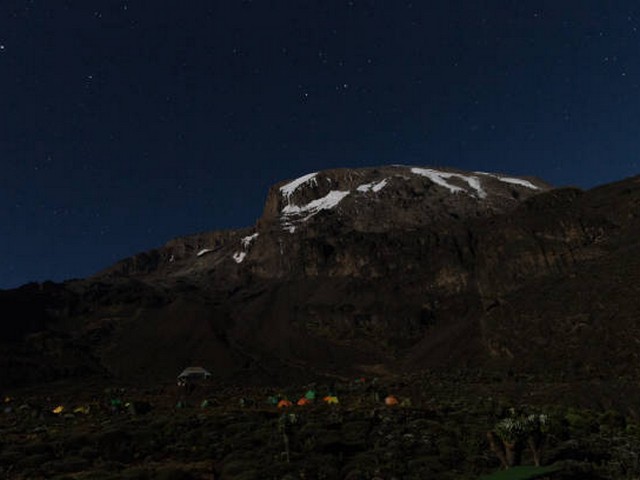Capturing Kilimanjaro Summit Celebrations On Film
Standing at the roof of Africa, surrounded by a blanket of clouds and the golden hue of the sunrise, the summit of Mount Kilimanjaro is more than just a physical peak; it's an emotional zenith, a symbol of personal achievement and a moment of unparalleled beauty. For many, reaching Uhuru Peak is a life-changing experience. As a leading tour operator, Kilimanjaro Centre for Trekking and Ecotourism (KCTE) knows the importance of this moment and understands why capturing it on film is so precious. Through this post, we'll guide you on how to immortalize your summit celebrations and make those memories last a lifetime.
The Magic of the Summit
Reaching the summit of Kilimanjaro is a journey through diverse ecological systems, starting from lush rainforests to the barren, lunar-like landscapes at the top. The final ascent, often commenced at midnight, is tough and cold, but witnessing the sunrise from the top makes every step worth it. The summit brings a flush of emotions; tears, smiles, and often, speechless awe. Capturing these moments on film isn't just about photography; it's about capturing a feeling, a memory, a piece of history.
Preparing Your Camera for the Climb
Choosing the Right Equipment
Not all cameras are suited for the harsh conditions of Kilimanjaro. The ideal camera needs to be lightweight, have a good battery life, and be capable of performing in low-light conditions and extreme cold. Cameras with interchangeable lenses offer flexibility, but a good quality point-and-shoot can also do the trick for those looking to lighten their load.
Battling the Elements
The cold at the summit can drain battery life quickly. Carrying extra batteries, kept close to your body to keep them warm, is crucial. Additionally, protecting your camera from moisture with a waterproof bag or casing is a good idea, as weather conditions can change rapidly.
Techniques for Capturing the Perfect Summit Shot
Timing is Everything
The most dramatic photos are often captured during sunrise when the light is soft and golden. Plan to set up your shot quickly; you might be tired, but the changing light waits for no one.
Composition
When capturing your summit celebration, include the iconic signboard that reads “Congratulations! You are now at Uhuru Peak, Tanzania, 5,895 meters.” This not only situates the photograph but also adds a memorable element to your shot. Play with angles—perhaps a low-angle shot to make your subjects look triumphant and towering.
Capture the Emotion
Photograph not just the landscapes, but the human element. The tears, the hugs, the tired yet triumphant smiles. These are the moments that tell the story of Kilimanjaro.
Keeping Memories Alive: After the Descent
Creating a Photo Journal
Once you've descended and rested, compile your photographs into a photo journal. Include notes about your feelings at different stages of the climb, the challenges you faced, and the joy of the summit. This not only preserves your memories but also creates a touching and personal account of your journey.
Sharing Your Story
In the digital age, sharing your journey can be inspiring to a community of like-minded adventurers. Post your summit celebration photos and stories on social media, or consider writing a blog post. Tagging Kilimanjaro Centre for Trekking and Ecotourism (KCTE) can help future climbers see what's possible and encourage them to take their own journey.
Why Climb with KCTE?
Climbing Kilimanjaro is a bucket list adventure, and doing it with Kilimanjaro Centre for Trekking and Ecotourism ensures you have a memorable, safe, and inspiring experience. Our seasoned guides not only know the mountain intimately but also understand the importance of pacing, acclimatization, and, of course, celebrating your summit success. We provide pre-climb training tips, gear checks, and post-climb celebrations.
FAQ: Capturing Kilimanjaro Summit Celebrations On Film
What type of camera is best for summit photos?
A lightweight camera with good battery life and low-light capabilities is ideal. Consider DSLRs, mirrorless cameras, or advanced compact cameras.
How do I protect my camera from the cold and moisture?
Keep extra batteries warm by storing them close to your body and use a waterproof bag or casing to protect the camera from moisture.
Can I hire a professional photographer from KCTE?
Yes, KCTE offers professional photography services as part of our climbing packages. Our photographers are skilled at high-altitude photography and can capture your summit moments beautifully.
What's the best time to take summit photos?
Aim for the sunrise time. The natural lighting is spectacular and offers a dramatic backdrop for powerful photos.
How can I ensure my photos tell a story?
Focus on capturing both landscapes and human emotions. Documenting the journey with notes and pairing these with your photos in a journal can add depth to your storytelling.
Capture Your Journey With KCTE
Conquering Kilimanjaro is an epic endeavor, and capturing it on film makes it eternally memorable. Whether it's through the lens of a camera or the experience shared with friends and family, the images of your climb will inspire you and others for years to come. Ready to take on the mountain and tell your own story of triumph? Book your Kilimanjaro climbing adventure with Kilimanjaro Centre for Trekking and Ecotourism (KCTE) today. Let's make those summit celebrations last forever, not just in your heart but also in the hearts of those you share them with.




